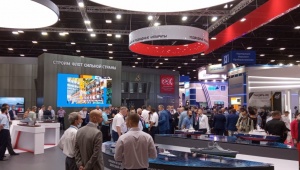The preceding year of 2019 was not a game-changing period for the Russian Navy. Athwart the plans, the following ships failed to join the ranks: the Project 22350 first serial frigate Admiral Kasatonov, the Project 20385 lead corvette Gremyaschy, the Project 11711 second landing ship Petr Morgunov, the Project 885M (Yasen-M class) first upgraded multirole nuclear submarine Kazan, and the Project 955A (Borey-A class) first advanced SSBN Knyaz Vladimir.
Disregarding the auxiliary ships and boats, in 2019 the Russian Navy commissioned the Project 22160 patrol ship Dmitry Rogachev, the Project 12700 minesweepers Ivan Antonov and Vladimir Yemelyanov, the Project 22800 corvette Sovetsk, the Project 636.3 diesel electric submarine Petropavlovsk-Kamchatsky, and the Project 21631corvette Ingushetia.
Coincidently, the US ship delivery program seemed to lose the initial steam, if not to skid at all. Earlier, the American shipbuilders annually handed two Arleigh Burke-class destroyers and two Virginia-class SSNs, but in the last year things limited to one destroyer USS Paul Ignatius and one submarine USS South Dakota. Indeed, the US Navy commissioned six Littoral Combat Ships (LCS), though they have no impact on the rating as their weight factor in the table is 1. In addition, USN faced the problems in repairs of aircraft carriers. Three of them have settled in the dock yards, so it will be long before they can fall into line.
As a result of the mentioned factors, the Russian Navy’s combat power index has improved in the last year, reaching 49% of the US naval potential. At that, both navies are toe-to-toe in terms of amount of ships, submarines, and combatant craft.
However, if one looks at the China’s figures, achievements of the Russian Navy would seem quite moderate. The personnel strength of the Chinese Navy has noticeably outranked both Russia and the US. Speaking of the naval power, China has become almost on par with the US Navy.
As to the future expectations, hopefully, in 2020 the Russian Navy would finally receive the ships and subs supposed to be commissioned in 2019. Besides, there is a groundwork: two new landing ships under upgraded Project 11711 that will be larger than the previously built Ivan Gren and Petr Morgunov were laid down at Yantar Shipyard; keels for other two Project 22350 frigates were laid at Severnaya Verf Shipyard, with increased number of Caliber cruise missiles (from 16 to 24); at the Army-2019 forum, Sevmash Shipyard won an order for additional two Project 885M multirole nuclear-powered submarines, and Admiralteyskie Verfi Shipyard signed a contract for other two Project 677 (Lada-class) diesel electric subs.
RUSSIA/US NAVAL CAPABILITIES RATING
For over 10 years Mil.Press has been conducting an independent inquiry into strength and status of the global leading navies (researches for 2007, 2009, 2010, 2011, 2012, 2013, 2014, 2015, 2016, 2017, 2018, 2019).
Combat capabilities is understood here as an overall index of military parity representing a relation of Russia’s naval power to similar parameters of the world’s biggest navy, the US one. Sure, Chinese Navy has been actively growing in the recent years, too, but official Beijing is trying to keep the lid on any information about its shipbuilding program, so unbiased assessment of ROCN’s combat capabilities seems impossible.
To compare naval power of different classes of Russian and American ships, we use conditional ‘weight factors’.
The primary objective of research is to detect a development vector of the Russian Navy regarding the strongest potential opponent. Notwithstanding the complex, multifaceted and confidential input data, and the lack of credible absolute values, the outlining of relative dynamics is still possible, indeed, if based on sequential comparison within a certain time interval, while the expert assumptions (‘weight factors’) remain unchanged. For more details, refer to the rating page.
Mil.Press takes into account the mission-ready ships, except for those being in reserve, under long-term overhauls, or mothballed. The research is based only on the open source data.























